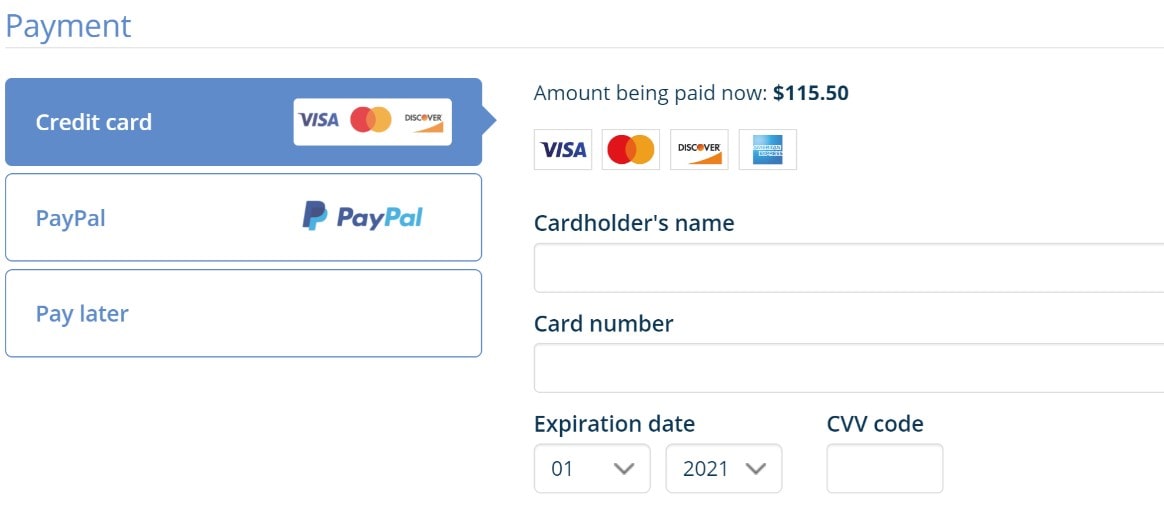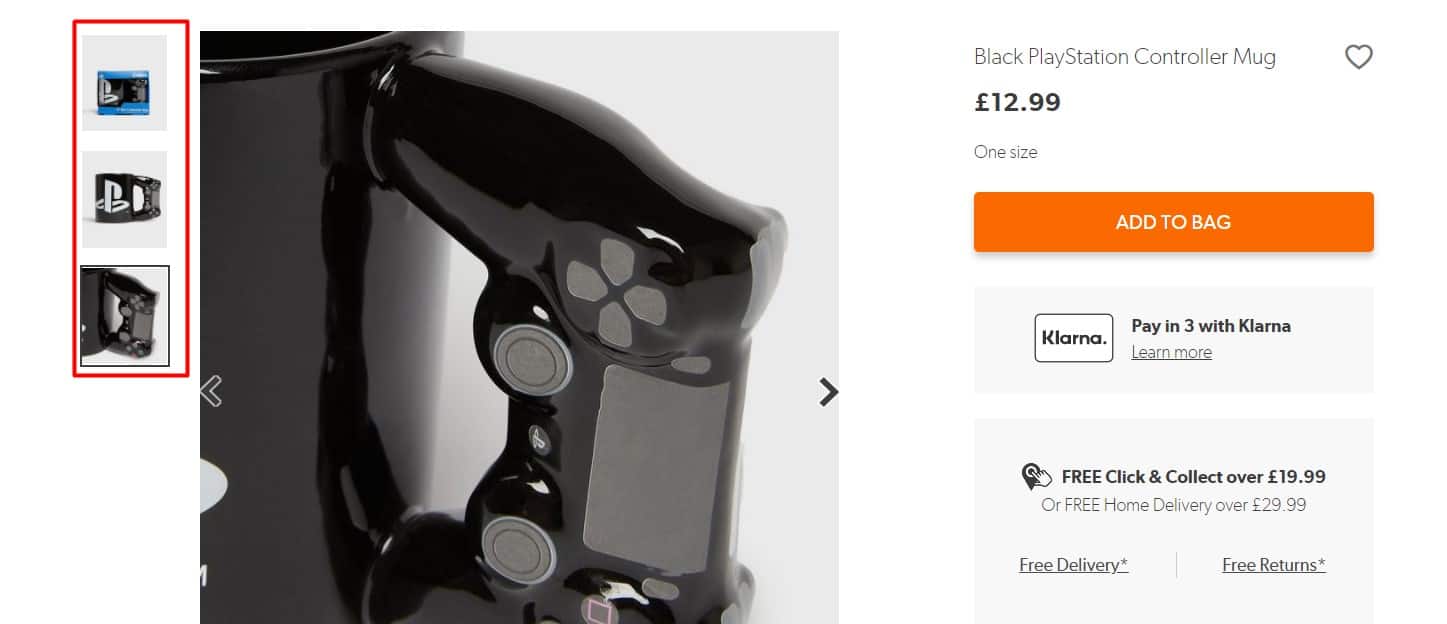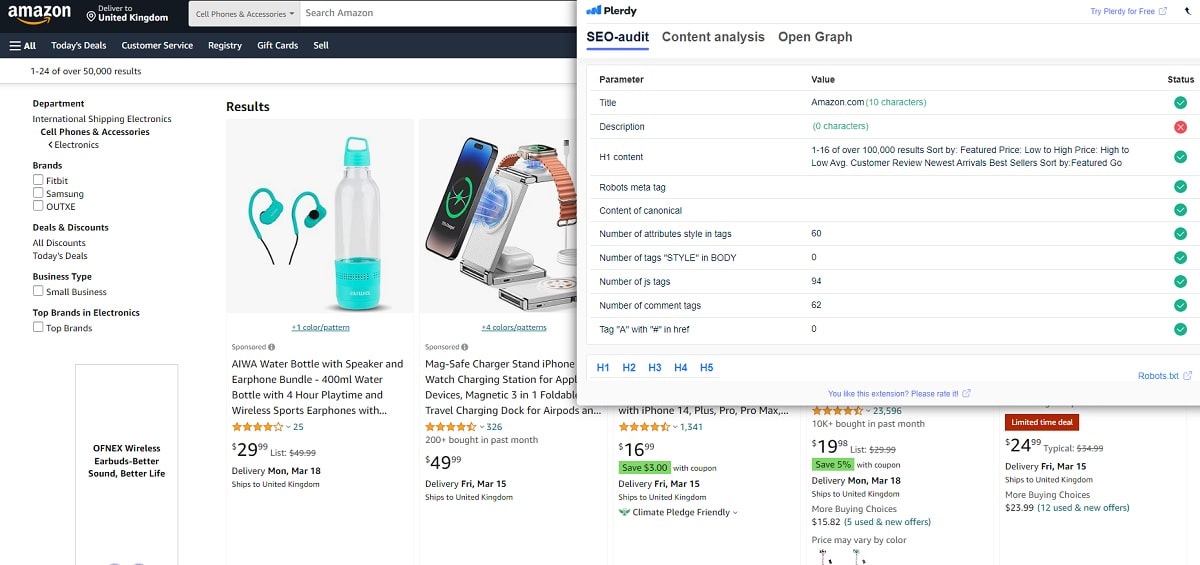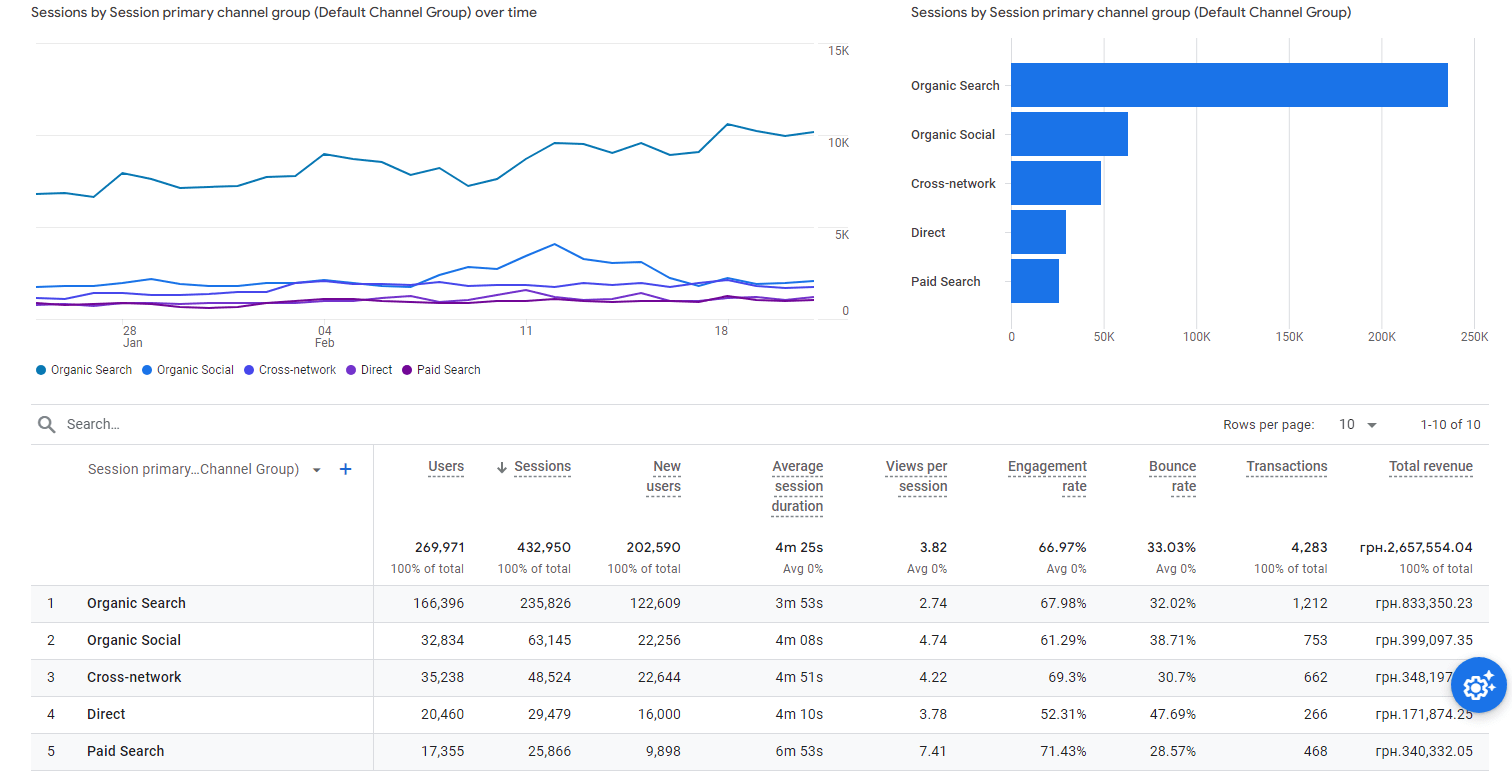Imagine this: You’ve just launched your ecommerce website, expecting a flood of customers, but instead, you get crickets. Why? Building an e-commerce website isn’t just about setting up a digital storefront; it’s an art and a science, combining aesthetics, functionality, and strategy. In the bustling digital marketplace, millions of online stores vie for attention. Standing out requires more than an appealing design. It’s about creating a seamless, user-friendly experience that converts visitors into loyal customers. That’s where the role of ecommerce website development becomes crucial. And here’s a fun fact: Plerdy, a champion in enhancing user experience, agrees that it’s not just about opening a shop; it’s about inviting customers in and making them stay. Welcome to the world of ecommerce website development – the secret sauce to making your online store visible and irresistible.

Understanding Ecommerce Web Development
Ecommerce website development is like assembling a jigsaw puzzle. Each element must fit precisely to form a functional picture that attracts and retains clients in this digital age, where online purchasing is required. Understanding ecommerce web development is essential for any business trying to succeed online.
Definition
Ecommerce web development involves creating an online platform for buying and selling goods and services. It’s not just about a visually appealing design; it’s about building a robust, scalable, and secure system that handles online transactions efficiently. This development process includes website design, shopping cart integration, payment processing, and user experience optimization. According to a study by Adobe, businesses with a strong design outperform those with a weak one by 219% over ten years. This statistic underscores the importance of well-thought-out ecommerce development in creating a competitive and profitable online presence.
Key Components
The key components of ecommerce website development include:
- A user-friendly interface.
- Secure payment gateways.
- Responsive design.
- Effective search engine optimization (SEO).
A user-friendly interface ensures that customers find what they need effortlessly, enhancing their shopping experience. Secure payment gateways like PayPal or Stripe build trust by protecting customer transaction data. A responsive design ensures the website is accessible and functional across different devices, catering to a wider audience. Lastly, SEO plays a pivotal role in making the website visible on search engines, driving organic traffic. As per Moz, a leader in SEO tools, proper SEO can significantly increase a site’s traffic and conversion rate, highlighting its importance in ecommerce development.
Ecommerce website development is a multifaceted process that requires meticulous planning and execution. By focusing on its key aspects, businesses can create a successful online store that draws customers in and provides them with a secure and enjoyable shopping experience. As the ecommerce landscape continues to evolve, staying abreast of these development fundamentals is crucial for any business aiming to succeed in the digital marketplace.
Mastering Ecommerce Website Development: Navigating the Perfect Platform

In mastering ecommerce website development, choosing the perfect ecommerce platform is a pivotal step. This decision lays the groundwork for your ecommerce website, much like choosing a solid foundation for a building. It’s essential for ensuring the stability and scalability of your ecommerce presence, impacting how well you can adapt to the evolving ecommerce market. Just as a robust foundation is vital for a building’s integrity, the right ecommerce platform is critical for the success and resilience of your ecommerce business.
Ecommerce Platform Varieties in Website Development
When delving into ecommerce website development, there are primarily two types of ecommerce platforms to consider: open-source and SaaS (Software as a Service). Open-source ecommerce platforms like Magento or WooCommerce are celebrated for their extensive customization capabilities. They provide complete autonomy over every aspect of your ecommerce website, including the user interface and the checkout experience. However, this level of control in ecommerce website development comes with the responsibility of managing hosting, security, and updates—a significant challenge without technical know-how. Conversely, SaaS ecommerce platforms like Shopify and BigCommerce offer a more user-friendly approach. These solutions manage hosting, security, and upgrades, letting you focus on ecommerce operations. Though they offer less customization than open-source platforms, they are ideal for those seeking ease and quick market entry in ecommerce website development.
Aligning Your Business Needs with the Right Ecommerce Platform
The selection between open-source and SaaS platforms in ecommerce website development should align with your business needs. If you envision a highly customized storefront with unique features, an open-source ecommerce platform may be more suitable. Alternatively, a SaaS ecommerce platform could be the better choice for a more straightforward setup and less technical overhead. Budget, in-house technical skills, and long-term ecommerce goals are crucial. As highlighted in a report by Gartner, the choice of an ecommerce platform can significantly influence a business’s ability to innovate and adapt to ecommerce market shifts, making it vital to select a platform that aligns with your ecommerce strategy.
Your ecommerce website development success depends on choosing the correct platform. It influences not just the functionality but also the growth potential and user experience of your ecommerce site. Open-source ecommerce platforms offer extensive customization and control, whereas SaaS platforms are known for their ease of use and quick market entry. This strategic choice should match your business goals, technical capabilities, and ecommerce vision. With the correct ecommerce platform, your website is well-prepared to meet current ecommerce market demands and thrive in future expansions.
Designing for Your Audience

Ecommerce website design is like tailoring a suit—it must fit perfectly to look and feel right. It is about understanding and meeting your target audience’s needs and preferences. After all, a well-designed website that resonates with its audience can significantly enhance user engagement and conversion rates.
Audience Research
The first step in designing for your audience is conducting thorough research. This involves diving deep into understanding who your customers are, their preferences, behaviors, and pain points. Tools like Google Analytics offer insights into your site visitors’ demographics, interests, and online behavior. Surveys, customer interviews, and feedback forms can provide valuable information about what your customers expect from your online store. Additionally, analyzing competitors can explain what works well in your industry. For instance, a study by Forrester highlights that understanding customer behavior can help create a more intuitive user experience. Gathering this data lets you create buyer personas and detailed representations of your ideal customers, helping you make informed design decisions.
Design Elements
With a clear understanding of your audience, the next step is to incorporate design elements that appeal directly to them. This includes choosing the right color scheme, layout, typography, and imagery that reflects your brand’s personality and resonates with your audience. For example, a minimalist and clean design can appeal to a high-end audience, while a vibrant and interactive design might attract a younger demographic. Accessibility should also be a priority, ensuring the site is easily navigable and user-friendly for all users, including those with disabilities. Ensure the website is flexible and consistent across devices and screen sizes to make shopping easy. Designing for your audience is a continuous process that demands a deep understanding of their requirements and values. It’s about creating an ecommerce environment where your audience feels at home, finds what they need easily, and enjoys the shopping experience. By focusing on audience research and incorporating the right design elements, you can create an ecommerce website that attracts and retains customers, ultimately driving business success.
Essential Ecommerce Features

In ecommerce, certain features are not just add-ons but essential gear in a well-oiled machine. An online store without signs, pricing, or a long checkout line is like a physical store without these things. An ecommerce site must have certain elements to ensure survival and success in the competitive digital marketplace.
Shopping and Checkout
The heart of an ecommerce site is its shopping cart and checkout process. A well-designed shopping cart should offer features like saving items for later, showing item details, and easy navigation back to product pages. According to the Baymard Institute, 69.57% of shopping carts are abandoned, often due to a complicated checkout process. Simplifying this process can significantly reduce cart abandonment rates. This includes offering guest checkout options, clear pricing and shipping information, and multiple payment methods. Secure payment options, like PayPal, Stripe, or credit card payments, with visible security badges can increase customer trust. Additionally, a transparent checkout process with a progress indicator keeps customers informed about the steps involved, reducing frustration and confusion.
SEO and Mobile Responsiveness
Statista reports that nearly 50% of web traffic originates from mobile devices, making mobile-responsive design essential. A mobile-responsive site adjusts content layout based on the device, ensuring a seamless shopping experience on a desktop, tablet, or smartphone. This responsiveness caters to user convenience and affects search engine rankings. Google’s mobile-first indexing means websites optimized for mobile have a better chance of ranking higher.
Search Engine Optimization (SEO) is equally crucial. Good SEO practices help your website appear higher in search engine results, driving organic traffic. This includes optimizing product descriptions, using relevant keywords, and ensuring fast loading times. A well-structured website with a defined hierarchy and sitemap helps search engines explore and index it, improving SEO.
The essential features of an ecommerce website go beyond aesthetics; they are activation functional elements that enhance user experience, build trust, and improve visibility. Effective shopping carts, checkout processes, mobile adaptability, and SEO tactics are the foundation of successful ecommerce websites. Integrating these elements effectively can transform your ecommerce site from a mere digital storefront into a thriving online marketplace.
Security and Compliance

In the digital world, security and compliance are not just buzzwords; they are critical pillars that uphold the integrity of your ecommerce website. Imagine a fortress; your ecommerce platform should be just as secure to protect against digital threats. In an era where data breaches are common, ensuring robust security and adhering to compliance standards is not optional but a necessity to build trust and safeguard your business.
Security Basics
Ecommerce security begins with an SSL certificate, which encrypts user-website data to protect sensitive data like credit card numbers. A report by GlobalSign indicated that websites with SSL certificates are more likely to gain customer trust. Furthermore, implementing strong password policies and two-factor authentication adds an extra layer of security. Regular security audits and updates are crucial in identifying and fixing vulnerabilities. Using reputable platforms and plugins can also significantly reduce the risk of security breaches.
Advanced Security Measures
Ecommerce websites should follow PCI DSS (Payment Card Industry Data Security Standard) requirements to secure card transactions and protect cardholders’ data. Advanced measures like firewalls, anti-malware software, and regular backups can also safeguard against potential threats. It’s also vital to have a robust response plan in case of a security breach. Human mistakes can cause vulnerabilities; therefore, educating personnel about security best practices is crucial.
Prioritizing security and compliance in ecommerce protects your business and customers and reinforces your reputation. In a marketplace where trust is paramount, ensuring your website is a secure, compliant, and reliable transaction platform can set you apart and drive long-term success. Investing in comprehensive security measures and staying abreast of compliance requirements should be a top priority for any ecommerce business.
Optimizing Ecommerce Product Pages for Success

Optimizing your product pages is a crucial step in ecommerce website development, akin to creating an engaging virtual storefront. It’s more than just listing items; it involves showcasing your products compellingly and informatively. This key aspect of ecommerce website development can turn casual browsing into actual purchases. Each product page should seamlessly combine captivating visuals, detailed information, and a smooth user experience, nudging visitors toward purchasing.
Visual Appeal in Ecommerce Website Development
The visual allure of your products is fundamental in capturing customer interest in ecommerce. High-resolution images are vital, as they are the primary way customers interact with products on an ecommerce website. A Justuno study indicates that 93% of consumers consider visual appeal crucial in purchasing decisions. Each product on your ecommerce site should feature multiple images from various angles and, ideally, include a zoom-in option for closer inspection. Incorporating 360-degree views or video demonstrations can further enrich the visual experience on your ecommerce website.
Consistency in imagery is also key in ecommerce website development. Uniform style, background, and lighting in product photos create a cohesive aesthetic for your ecommerce website. This consistency should extend to the product page layout. A neat, organized design with a clear structure enhances user navigation and information accessibility, striving to mirror the in-store experience as closely as possible on your ecommerce site.
Compelling Descriptions and Reviews in Ecommerce
While visuals attract, the product description is crucial in finalizing a sale on an ecommerce website. Descriptions should be succinct and detailed, covering essential product information like size, materials, and usage. The language should resonate with your target audience, emphasizing how the product addresses their needs or improves their lives. Incorporating relevant keywords can also boost the SEO of your ecommerce site, making products more visible online.
Customer reviews and ratings are integral to product pages in ecommerce website development. They offer social proof and foster trust in your products. BrightLocal’s survey reveals 87% of consumers read online reviews for local businesses in 2020. Including a section for reviews and ratings on your ecommerce website can greatly influence buyers’ decisions. Encouraging customer feedback and simplifying the review process is beneficial.
Effective product pages in ecommerce website creation require careful visual and textual attention. High-quality images and videos and compelling and informative product descriptions are key to converting visitors to customers. Adding customer reviews lends credibility and trust to your product pages. By harmoniously integrating these elements, your product pages can significantly drive sales and elevate the shopping experience on your ecommerce website.
Elevating Ecommerce Through Marketing and SEO

In the vast online marketplace, more than simply having a great product is needed for ecommerce success. Your ecommerce website needs visibility and engagement, and this is where effective marketing and SEO strategies become indispensable. These strategies act as digital amplifiers, elevating your brand’s presence and drawing customers to your ecommerce platform. Excelling in these tactics is crucial for transforming your ecommerce business from just another online store to a prominent market player.
SEO Fundamentals in Ecommerce Website Development
Search Engine Optimization (SEO) is crucial in ecommerce website development, involving optimizing your website to align with search engine algorithms, particularly Google’s. Effective SEO ensures that when potential customers look for products you offer, your ecommerce website ranks high in their search results. A key component of SEO in ecommerce website development is keyword optimization, integrating relevant keywords into your website’s content, titles, meta descriptions, and image tags. Utilizing tools like Google’s Keyword Planner can assist in identifying optimal keywords based on search volume and competition.
Site performance also plays a vital role in SEO for ecommerce website development. Google’s algorithm prioritizes websites that load quickly and provide a seamless user experience. This involves optimizing image sizes, implementing caching, and ensuring your ecommerce website is responsive for mobile users. Research by Portent shows that websites with a load time of 1 second have a conversion rate that is thrice as high as those that take 5 seconds to load. Updates to your ecommerce website with fresh, high-quality content show search engines that your site is active and relevant.
Marketing Strategies in Ecommerce Development
Beyond SEO, developing a comprehensive marketing strategy is crucial for attracting and engaging customers in ecommerce. This encompasses various channels and tactics. Email marketing, for instance, remains a potent tool in ecommerce. Creating an email list for newsletters, product updates, and personalized offers can significantly boost traffic and encourage repeat purchases. Tools like Mailchimp provide advanced functionalities for managing email campaigns in ecommerce.
Social media marketing is another essential facet of marketing in ecommerce website development. Facebook, Instagram, and Pinterest are great for brand visibility and audience engagement. Paid advertising on these platforms allows targeting specific demographics, effectively driving quality traffic to your ecommerce website. Additionally, influencer marketing, leveraging popular social media figures to endorse your products, can be especially impactful in reaching younger demographics.
Through blogs and videos, content marketing offers value to your audience while subtly promoting your ecommerce products. It involves creating useful, entertaining, or informative content for your target audience, driving organic traffic and fostering brand loyalty.
For a thriving ecommerce business, a balanced focus on SEO and marketing strategies is essential. While SEO boosts your website’s visibility in search engine results, comprehensive marketing strategies engage and retain customers. Investing in these areas can significantly expand the reach, engagement, and conversion rates of your ecommerce site, transforming it into a dynamic hub of customer activity.
Analytics and Optimization

In the world of ecommerce, launching your website is just the beginning. The key to ongoing success lies in continually analyzing and optimizing your site. It’s like being a detective, where every clue (data point) can lead to a breakthrough in improving your site’s performance. Learning how people use your site and making data-driven decisions is essential for competitiveness and customer satisfaction.
Analyzing Data
Data analysis in ecommerce involves collecting and interpreting data to understand customer behavior and website performance. Tools like Google Analytics provide invaluable insights into traffic sources, user behavior, and conversion rates. By examining this data, you can find patterns and trends like which goods are most popular, where customers are dropping off, and which marketing efforts work. For instance, a high bounce rate on a product page could indicate issues with content, pricing, or page load times. Kissmetrics found that a one-second page response latency can reduce conversions by 7%, emphasizing the necessity of performance analytics.
Website Optimization
The next step is website optimization based on the insights gathered from analytics. This process involves making adjustments to improve user experience and conversion rates. This could include redesigning the layout for better navigation, optimizing pages for faster load times, or refining content for clarity and engagement. The powerful optimization approach of A/B testing lets you compare page variants to see which performs better. Moreover, optimizing for SEO, mobile responsiveness, and implementing personalized content, like product recommendations based on user behavior, can significantly enhance the user experience and boost conversions.
Analytics and optimization are not one-time tasks but ongoing processes that drive the success of an ecommerce website. You can attract visitors and turn them into devoted clients by regularly analyzing data and improving your site. This cycle of analysis and optimization ensures your ecommerce site remains dynamic, user-friendly, and ahead of the competition.
Conclusion
In crafting your ecommerce empire, remember that the journey doesn’t end with launching your website. It’s a continuous voyage of improvement and adaptation. Successful digital marketing requires knowing and applying the correct strategies, from compelling product pages to smart marketing, all supported by strong security. But why stop here? Dive deeper into the ocean of ecommerce knowledge with more insightful articles from Plerdy. Each post contains vital ecommerce advice to help you navigate the ever-changing seas. And if you’re looking for a compass to guide you, Plerdy’s tools are designed to enhance your website’s performance and user experience, making it the perfect co-captain for your online adventure.
